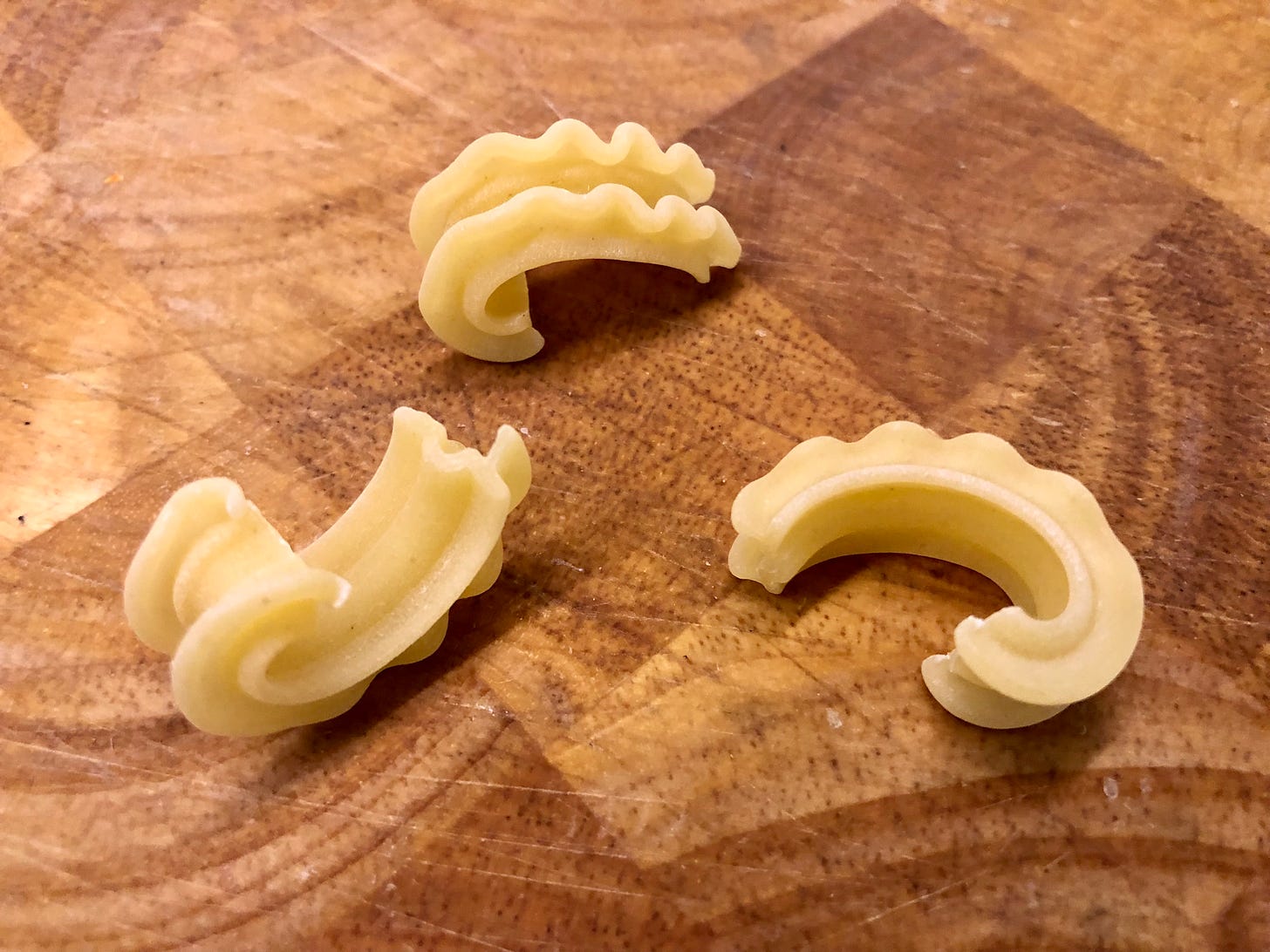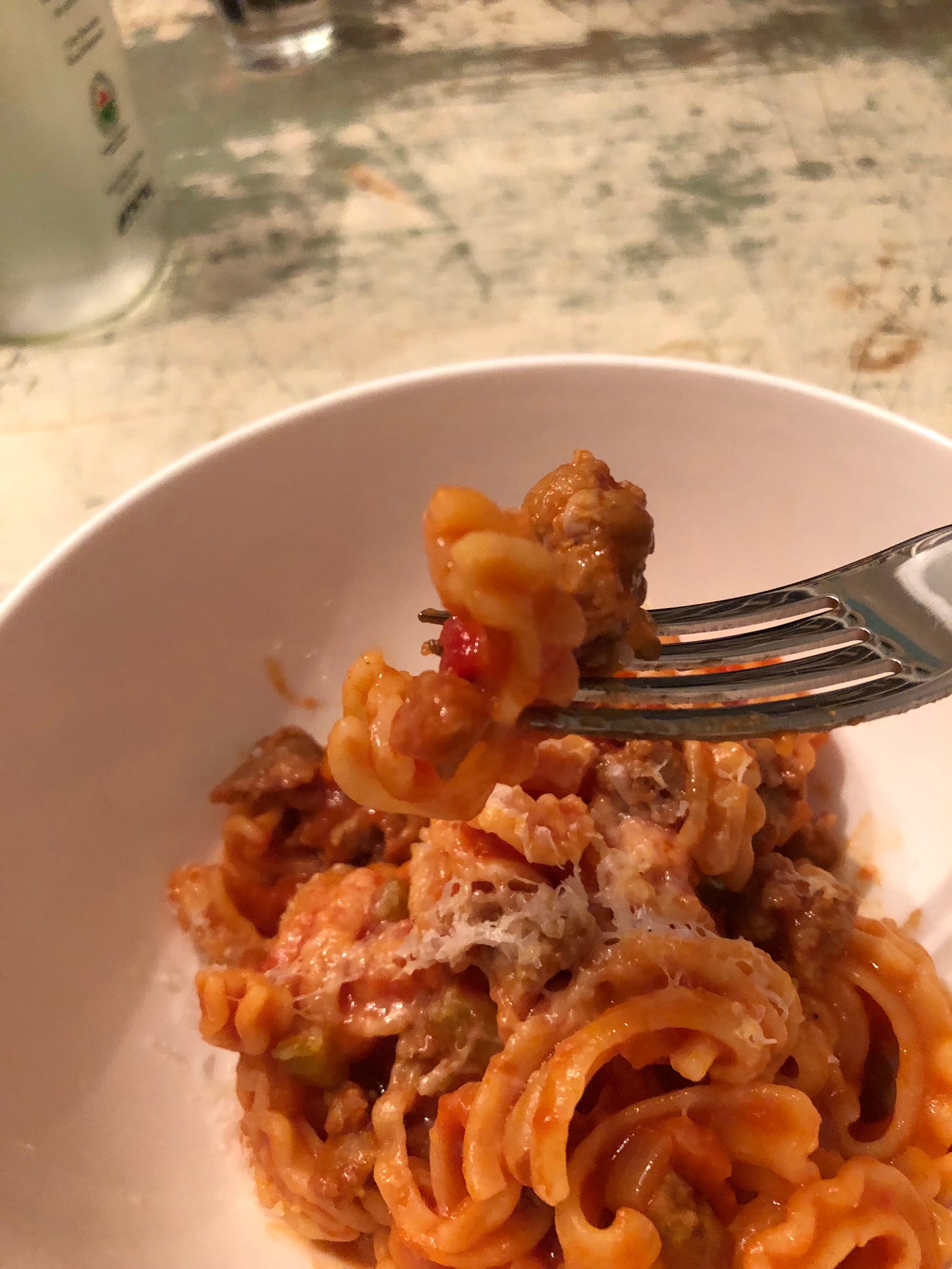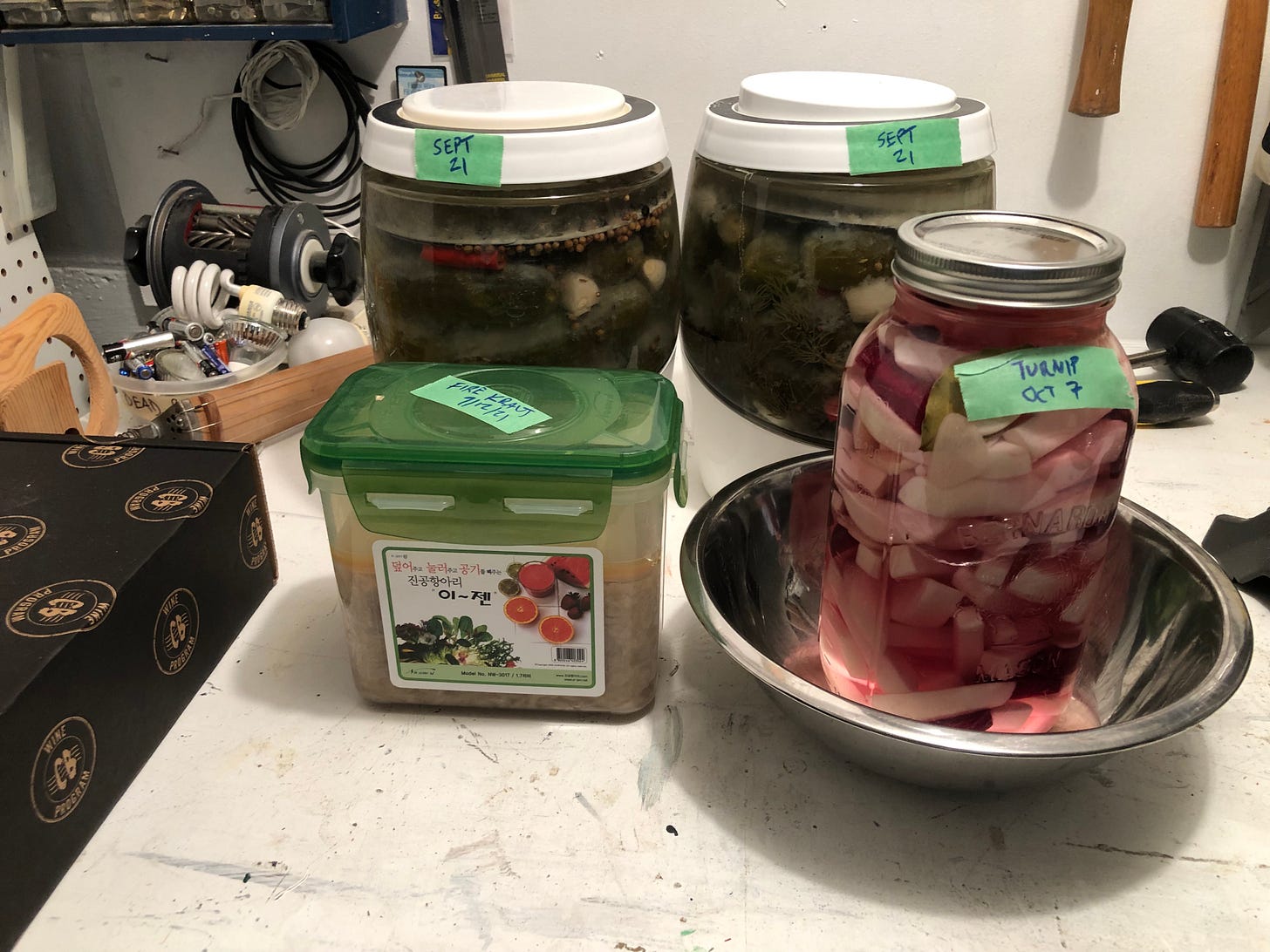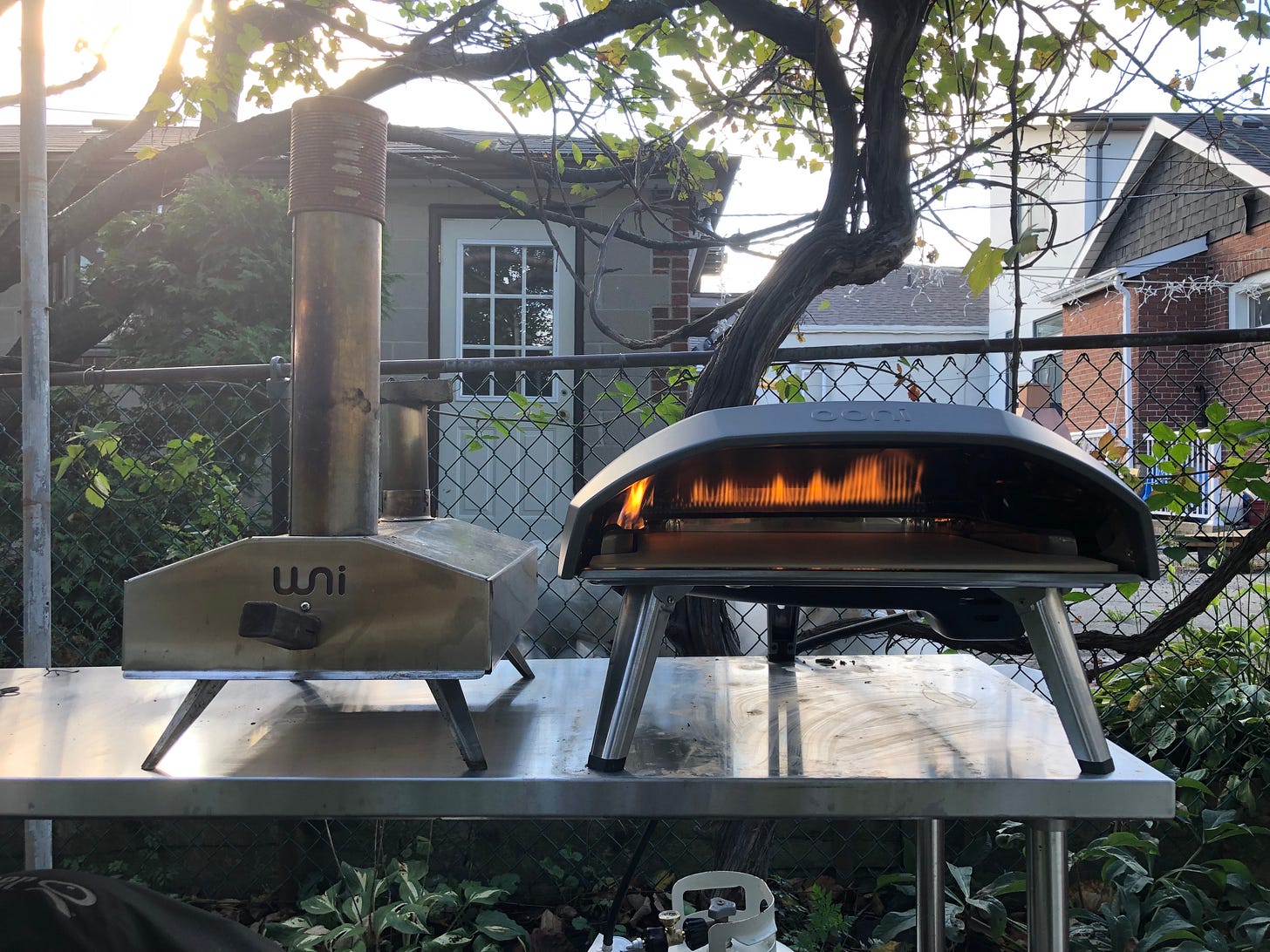17. The Plate Cleaner Turns 1!!!
Will Year 2 be more regular?
On October 21 of last year, I finally got up the nerve to announce the birth of The Plate Cleaner, an idea I’d been kicking around for over a year before that. As I wrote at the time, my greatest fear was that no one would care and no one would sign up. Happily, many of you have signed up and, presumably, also care. But there’s plenty of room for more, so if you know someone who would enjoy this newsletter please share it with them.
In the past year I managed to put out 16 issues, or about one every 3 1/4 weeks. As you know, it was hardly a steady drumbeat of issues, with long stretches between flurries of activity. In Year 2 I resolve to be more regular and more productive.
In the last issue, I showed a photo of my newly-arrived cascatelli, the pasta shape invented by the host of The Sporkful podcast, Dan Pashman. We’ve now been through two of the four boxes I ordered, enough to have formed an opinion about it.
(If you haven’t checked it out already, Mission Impastable, the Sporkful episodes that chronicle Pashman’s quest to invent a new pasta shape, are a fun listen.)
Pashman focused on three properties he feels all great pasta must possess (and I quote):
Sauceability: How readily sauce adheres to the shape
Forkability: How easy it is to get the shape on your fork and keep it there
Toothsinkability: How satisfying it is to sink your teeth into it
Cascatelli scores high in all three areas, as the photo below demonstrates.
It is extremely forkable, although it takes almost 14 minutes of cooking to get there. Once it’s on the fork, it’s staying on. I guess the photo doesn’t demonstrate how toothsinkable it is, but trust me, it is, as long as you have cooked it enough. I came up a little short the first time I cooked it and dinner was… a robust chew. An error in the other direction also has its perils. If you overcook, the distinctive ruffles that help so much with sauceability can fall off.
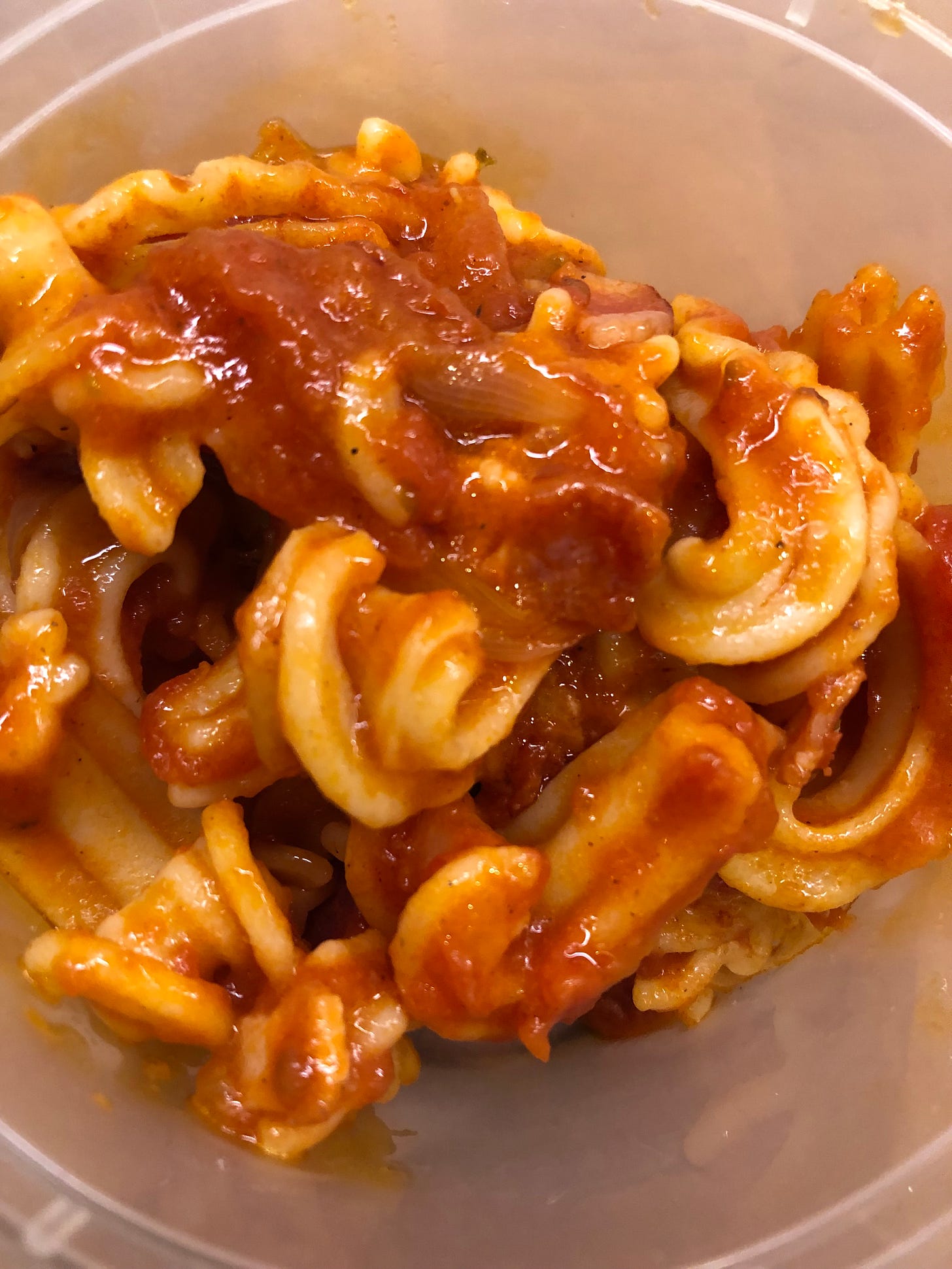
As for that sauceability, it is considerable. Both solids and liquids from the sauce find all sorts of hidey-holes and crannies. Your noodles will not be bare. But here’s the thing: if you cook and sauce your pasta properly you probably won’t notice that much of a difference.
To maximize the sauceability of any pasta, cook it until it’s almost done. Drain it, being sure to reserve some of the cooking water. Mix your sauce and pasta in the pot with a bit of the cooking liquid and cook until the pasta is properly al dente. In that time the starch from the water should cook down and emulsify with your sauce to help coat your pasta smoothly and evenly1.
So it’s possible that cascatelli could almost be like a saucability crutch for cooks, giving them what they aren’t able to achieve on their own. I guess I should have made it once without taking the steps above to find out. I would, but I’m down to our last two boxes (although the wait time for orders has gone from 12 weeks when I ordered to about 2-4 weeks now) and I don’t want to waste any of our remaining stock on a batch of poorly sauced noodles.
What I’m Consuming AND What’s on the Menu: The Two Ps
In the six weeks since the last issue, two things have dominated my cooking: pickles and pizza. If you follow The Plate Cleaner on Instagram (Why aren’t you following The Plate Cleaner on Instagram?) you are going to know all of this already.
I was off for most of September, but what I lacked in employment and income, I gained in access to cucumbers (mostly) and jars. Half-sours cold-fermented in the fridge. Full-sours fermented in the basement. Counterfeit McClure’s processed in the steam canner2 with vinegar and hot peppers. Sauerkraut that molded over, unfortunately. Middle Eastern-style pickled turnips. Visitors for backyard pizza frequently found themselves in an impromptu pickle tasting and usually went home with a few of their favourites.
And on the topic of pizza, once the first few weeks of school were finished, we started hosting people in the backyard for pizza again, at first using the wood pellet-fired Uuni 2 I bought second-hand from a friend last summer. He gave me a great price and it seemed like a good low-investment way to see if I liked making pizza. (I do.) All summer I had been saying I would upgrade the oven next year. But as the days started to get cooler, I decided it was time to act. The oven I wanted had been out of stock for months, but had recently become available again. If I wanted one for sure next summer, it made sense (I told myself) to get it now.
It has only been a week, but I’m glad I decided to go for it. The power and stability of the propane-burning Ooni Koda 16 is just what I was looking for. Pies cook in about 90 seconds (which would be shorter if I were better at turning them while still inside the oven). I was a little sad to give up burning wood in favour of gas, but when a pizza is only in the oven for such a short time, wood isn’t really adding that much to the flavour.
The size is also very exciting. Last issue I talked about helping someone decide on the similar Gozney Roccbox. (That offer to help you choose kitchen equipment still stands, btw.) Like my oven emeritus, the Roccbox can only make pies up to 12”; as its name implies, the Koda 16 can make them up to 16”. Larger pizzas means fewer pizzas, which means more time to spend with guests. It’s also large enough to accept skillets and low-sided roasting pans, so non-pizzas are also possible.
Sadly, the Koda 16 is not an all-weather oven. I rigged a slanted tarp overhead to keep it dry one night when we were expecting rain (that never arrived) because it can’t be run in wet conditions. Which means it will soon find its winter home in the basement on top of the all season tires, dreaming of spring like the rest of us.
Thanks to all of you for the first year of The Plate Cleaner. If you’ve been here since the start, thanks for sticking with me. If you’re a newer arrival, I hope you’ll decide to hang around for a while. And thank you for your kind words along the way. I never knew so many men had such strong feelings about caraway seeds.
I feel like you probably knew that already. I also feel like I should write another Idea Free to a Good Home about selling “Pasta Sauce Magic” (i.e., jars of pasta water.) to the saps who don’t. Fortunes could be made.
If you do any canning, a steam canner, which uses a small amount of water instead of a massive potful, will change your life. Processing times are exactly the same, but the time to get the canner up to a boil is a fraction of what it is with a water bath. Turnaround times between batches too. You’ll save hours, as well as all the energy that goes into heating all that water.



